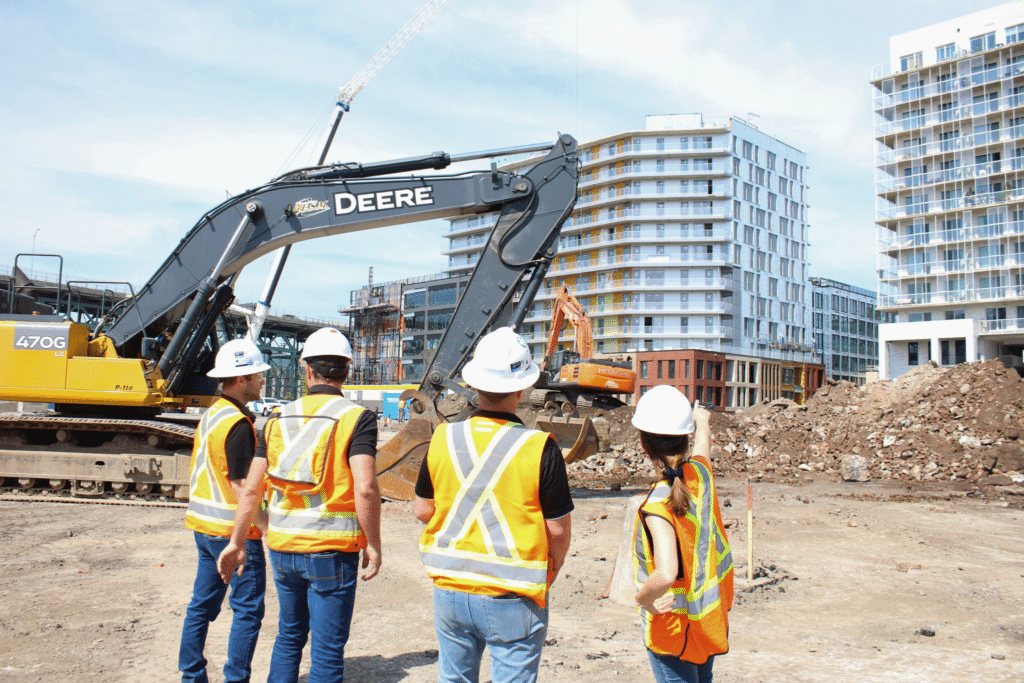In over thirty years of existence, innovation and originality in the design of the habitat have always been important to Groupe Prével. More recently, the company was particularly interested in neighbourhood revitalization and preservation of built heritage. Since the first shovelful of earth was dug up, the Quai de la Commune development represented a major challenge. Remember that in 1996, when the project began, the neighbourhood was not as attractive as it is today. In fact, the Faubourg des Récollets was an area that was completely destructured and abandoned. At first glance the project may not have seemed too attractive, but for us, there was a real potential for revitalization and we went ahead. Its close proximity to the major waterways, downtown and the Old Port permitted us to offer quality lofts at competitive prices, without compromising on geographic location. There were three main directives which guided this real-estate development: 1 – Offering a new product: lofts. Of course this kind of apartment already existed in New York and London, but the market for lofts in Montreal was still in its infancy. 2 – Targeting a market of young buyers with artistic and audacious spirits who were interested in buying a property that reflected their lifestyles. 3 – Finally, preserving the industrial heritage of the project by giving a second life to old and dilapidated buildings was of the utmost importance to us. When looking at our various developments, Époques, Lowney, and Impérial Lofts, we quickly realize that they all played a vital role in the revitalization of their respective neighbourhoods.
Le Seville and Shaughnessy Village
It seems, however, that this is already the case with the Seville, in the heart of Shaughnessy Village. The first units are only being delivered during the summer of 2012, and already the project has had an impact on the neighbourhood. As Luciano d’Iorio stated in The Gazette: « At this point, the Seville project is beyond the speculation stage and a reality. Concrete is being poured on a daily basis and a tower is emerging above street level, beginning to cast a shadow on its dilapidated neighbours. One gets the sense walking through the neighbourhood that this project is the catalyst that this section has been waiting for. «
The Bassins du Havre
Our other project under development, the Bassins du Havre, represents a new challenge for us. We are certain that the neighbourhood possesses all the right elements for a successful revitalization. Its close proximity to the water, downtown and Old Montréal, combined with tranquility and green spaces, make this history-filled site a truly unique place to live.
In Partnership
Many partners are needed in order to successfully revitalize a neighbourhood. For example, in the case of the Bassins du Nouveau Havre, the Canada Lands Company (CLC) took charge of the urban planning required at the start of the project. The CLC also coordinated the excavation and demolition of the old Canada Post sorting station located at the site; naturally this work was done in the most ecological way possible so as to protect the surrounding environment. Since the project contains new buildings, we made the important objective of obtaining LEED (Leadership in Energy and Environmental Design) certification so as to offer our residents a style and quality of life based on sustainable development and ‘green living’. The historical nature of the site is such that maintaining the surroundings and preserving the atmosphere of the Lachine Canal was central to our planning. Each building is surrounded by water basins, a reminder of the past when the old basins were in use. Inspired by the success of our past developments, we are convinced that this project will have a profound effect and contribute significantly to the development and revitalization of a neighbourhood rife with potential. Jacques Vincent



